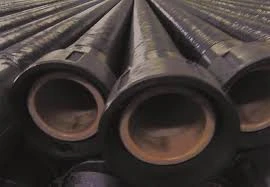
-
 Afrikaans
Afrikaans -
 Albanian
Albanian -
 Amharic
Amharic -
 Arabic
Arabic -
 Armenian
Armenian -
 Azerbaijani
Azerbaijani -
 Basque
Basque -
 Belarusian
Belarusian -
 Bengali
Bengali -
 Bosnian
Bosnian -
 Bulgarian
Bulgarian -
 Catalan
Catalan -
 Cebuano
Cebuano -
 China
China -
 China (Taiwan)
China (Taiwan) -
 Corsican
Corsican -
 Croatian
Croatian -
 Czech
Czech -
 Danish
Danish -
 Dutch
Dutch -
 English
English -
 Esperanto
Esperanto -
 Estonian
Estonian -
 Finnish
Finnish -
 French
French -
 Frisian
Frisian -
 Galician
Galician -
 Georgian
Georgian -
 German
German -
 Greek
Greek -
 Gujarati
Gujarati -
 Haitian Creole
Haitian Creole -
 hausa
hausa -
 hawaiian
hawaiian -
 Hebrew
Hebrew -
 Hindi
Hindi -
 Miao
Miao -
 Hungarian
Hungarian -
 Icelandic
Icelandic -
 igbo
igbo -
 Indonesian
Indonesian -
 irish
irish -
 Italian
Italian -
 Japanese
Japanese -
 Javanese
Javanese -
 Kannada
Kannada -
 kazakh
kazakh -
 Khmer
Khmer -
 Rwandese
Rwandese -
 Korean
Korean -
 Kurdish
Kurdish -
 Kyrgyz
Kyrgyz -
 Lao
Lao -
 Latin
Latin -
 Latvian
Latvian -
 Lithuanian
Lithuanian -
 Luxembourgish
Luxembourgish -
 Macedonian
Macedonian -
 Malgashi
Malgashi -
 Malay
Malay -
 Malayalam
Malayalam -
 Maltese
Maltese -
 Maori
Maori -
 Marathi
Marathi -
 Mongolian
Mongolian -
 Myanmar
Myanmar -
 Nepali
Nepali -
 Norwegian
Norwegian -
 Norwegian
Norwegian -
 Occitan
Occitan -
 Pashto
Pashto -
 Persian
Persian -
 Polish
Polish -
 Portuguese
Portuguese -
 Punjabi
Punjabi -
 Romanian
Romanian -
 Russian
Russian -
 Samoan
Samoan -
 Scottish Gaelic
Scottish Gaelic -
 Serbian
Serbian -
 Sesotho
Sesotho -
 Shona
Shona -
 Sindhi
Sindhi -
 Sinhala
Sinhala -
 Slovak
Slovak -
 Slovenian
Slovenian -
 Somali
Somali -
 Spanish
Spanish -
 Sundanese
Sundanese -
 Swahili
Swahili -
 Swedish
Swedish -
 Tagalog
Tagalog -
 Tajik
Tajik -
 Tamil
Tamil -
 Tatar
Tatar -
 Telugu
Telugu -
 Thai
Thai -
 Turkish
Turkish -
 Turkmen
Turkmen -
 Ukrainian
Ukrainian -
 Urdu
Urdu -
 Uighur
Uighur -
 Uzbek
Uzbek -
 Vietnamese
Vietnamese -
 Welsh
Welsh -
 Bantu
Bantu -
 Yiddish
Yiddish -
 Yoruba
Yoruba -
 Zulu
Zulu
frp shell
Exploring the FRP Shell An Overview of Fiber Reinforced Polymer Technology
In recent years, advancements in materials science have given rise to innovative technologies that significantly enhance construction and manufacturing processes. One such breakthrough is the use of Fiber Reinforced Polymer (FRP) shells. This composite material, composed of a polymer matrix reinforced with a network of fibers, has emerged as a game-changer in various industries, including aerospace, automotive, and civil engineering.
.
One of the most significant advantages of FRP shells is their lightweight nature. For instance, in the aerospace industry, the reduction of weight directly translates into fuel efficiency and improved performance. Aircraft manufacturers have increasingly adopted FRP composites to construct wings, fuselages, and other structural components. Similarly, in automotive applications, the use of FRP shells allows for lighter vehicles that consume less fuel and emit fewer emissions, aligning with the global push for sustainable technologies.
frp shell

In the field of civil engineering, FRP shells are revolutionizing the construction of buildings and infrastructure. Their resistance to environmental factors such as moisture, chemicals, and UV exposure makes them ideal for applications in harsh conditions. Bridges, pipes, and storage tanks made from FRP can endure corrosive environments that would typically compromise traditional materials. Furthermore, the longevity of FRP shells minimizes maintenance costs and extends the lifespan of structures, making them a cost-effective choice in the long run.
The manufacturing process for FRP shells involves various techniques, including hand lay-up, vacuum infusion, and resin transfer molding. Each method has its advantages, enabling manufacturers to tailor processes to specific project requirements. Additionally, advancements in automation and digital fabrication technologies are streamlining the production of FRP components, further enhancing efficiency and precision.
While the benefits of FRP shells are numerous, there are also challenges to consider. The initial costs of materials and production can be higher compared to conventional materials, which may deter some industries from making the switch. Furthermore, the recyclability of FRP composites is a topic of ongoing research and development. As environmental concerns continue to rise, the industry is exploring ways to improve the sustainability of FRP materials, including methods for recycling and repurposing them at the end of their lifecycle.
In conclusion, FRP shells represent a significant advancement in material technology, offering a range of benefits across various sectors. Their lightweight, durable, and corrosion-resistant properties make them a superior choice for many applications, from transportation to infrastructure. As research continues to address the challenges associated with cost and recyclability, the future of FRP technology looks promising. The ongoing evolution of this composite material is likely to enhance its role in building a more sustainable and efficient world. Whether utilized in aerospace, automotive, or civil applications, FRP shells are poised to play a pivotal role in shaping the materials of tomorrow.
Latest news
-
Exploring the Benefits of Top Hammer Drifter Rods for Enhanced Drilling PerformanceNewsJun.10,2025
-
High-Precision Fiberglass Winding Machine for GRP/FRP Pipe Production – Reliable & Efficient SolutionsNewsJun.10,2025
-
FRP Pipes & Fittings for Shipbuilding - Corrosion-Resistant & LightweightNewsJun.09,2025
-
Premium FRP Flooring Solutions Durable & Slip-ResistantNewsJun.09,2025
-
Premium Fiberglass Rectangular Tanks Durable & Lightweight SolutionNewsJun.09,2025
-
Tapered Drill String Design Guide Durable Performance & UsesNewsJun.09,2025









